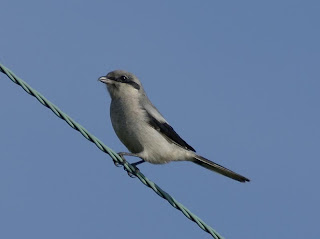At the risk of sounding like a bunch of menopausal women, all birders are currently waiting for The Change.
Nothing to do with our own biology or time of life of course (well not for most of us anyway). Instead it is the changing of the birding season, as winter gives way to spring and the birds start their mass migrations.
It is an event which sees our over-wintering birds - the fieldfares and redwings, the geese and wildfowl, and the millions of 'foreign' blackbirds, robins and starlings which spend winter in our gardens - return north and east to their own breeding territories. And to fill the void we receive in turn our summer birds, newly returned from Africa and the south - our chiffchaffs, willow warblers, common terns, swifts, martins and, of course, our swallows.
Unfortunately it's taking its time this year.
The mild winters of recent years have set a pattern of early springs, with everything kicking off in earnest from mid February onwards. Now, following a decidedly wintery winter, it's back to normal, and so birders are left staring at pretty much the same birds that they've been staring at for weeks. In short, most of us are a bit bored.

So, despite feeling a little under the weather on Sunday morning, I was pleased to be back at Fingringhoe in Essex to see at close quarters one 'change' that can be relied on every single day - the turning of the tide. The last half-an-hour of the tide coming in nearly always offers the best birding at estuary locations, with huge flocks of waders, wildfowl and geese being forced closer and closer to the shore (and to the birder in his hide), jostling for position on the diminishing mudflats and finally settling down to wait until the mud flats are opened again.
I was particularly lucky with my timing on Sunday, settling down in the shoreline hide just as this spectacle started.
I was therefore in the best place to enjoy great views of hundreds of dunlins, knots, redshank, curlews, grey plover, brent geese, shelduck, wigeon, lapwing, oystercatchers and more. Among them were a few scarcer birds - a couple of turnstones were my first of 2010, likewise the marsh harrier that soared overhead.

And once the excitement was over, I settled down with scope and Canon G9 to see if digiscoping was viable with this less-than-perfect combination. It was, up to a point, so I spent a happy half hour photographing birds including a grey plover, one species I had never photographed before.
Bird of the day:
Marsh harrier (
Circus aeruginosus), a magnificent broad-winged raptor which is getting more and more common along the east of the country (still a long way to go before it becomes more than an occasional sighting in Warwickshire though).


























